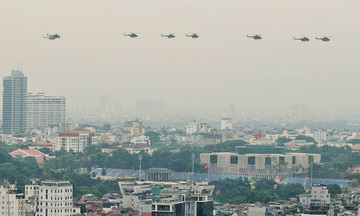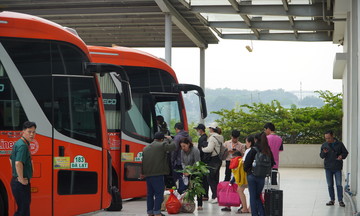The Ministry of Public Security is drafting a law to amend 10 laws related to security and order. Regarding the Road Traffic Safety and Order Law, the ministry proposes that "partially automated motor vehicles" not be considered intelligent transportation. Therefore, these vehicles would not require special operating permits.
Current regulations for permitting intelligent vehicles are implemented under Decision 1383/2025 of the Ministry of Public Security. To use partially automated vehicles, owners must submit applications online, via postal service, or in person.
The permitting authority is responsible for receiving and reviewing applications. Within 7 working days of receiving an application, the authority checks vehicle registration data and compares it with the owner's application. If the application is valid, an operating permit is issued according to the government's template.
If the draft law is passed, partially automated vehicles will no longer need to follow these administrative procedures.
 |
Driver-assistance features control system in a Nissan vehicle. Photo: Nissan |
Driver-assistance features control system in a Nissan vehicle. Photo: Nissan
According to the draft, an intelligent transportation vehicle is a motor vehicle capable of fully automated operation, including route determination and handling traffic situations.
Intelligent transportation vehicles are currently classified into 5 levels. Levels 1, 2, and 3 are partially automated motor vehicles according to international standards. Levels 4 and 5 are fully automated motor vehicles capable of handling all driving tasks.
Many mid-range and high-end cars imported, manufactured, and assembled in Vietnam already have driver-assistance features reaching level 1 and approaching level 2. Consequently, these vehicles are currently classified as intelligent transportation and require special operating permits.
However, according to the Ministry of Public Security, level 1, 2, and 3 vehicles primarily offer driver-assistance functions in certain conditions and situations, and do not fully replace the driver. These functions include lane keeping assist, adaptive cruise control, emergency braking, lane change alerts or prevention, and automatic parking.
These features reduce driver fatigue on long trips, maintain safe distances, detect potential hazards, and react quickly to sudden dangerous situations. Drivers can choose whether to activate these features. "Our assessment shows that these vehicles are suitable for Vietnam's traffic conditions and do not necessarily require restricted operation or permits," the drafting agency stated.
Regarding level 4 and 5 vehicles (fully automated motor vehicles), the Ministry of Public Security believes that Vietnam's current traffic conditions are not suitable for their operation. Due to the high risk of accidents, these vehicles require restricted operation and permits.
The draft law amending 10 security and order laws will be submitted to the National Assembly by the government at its year-end session.
Son Ha












